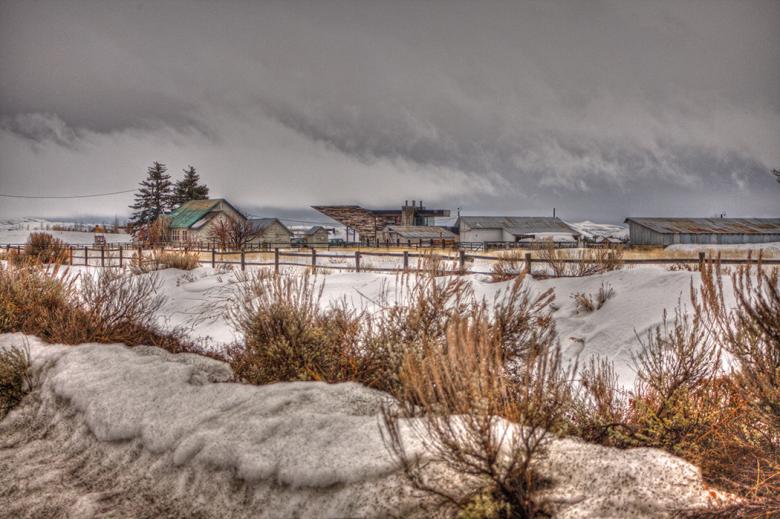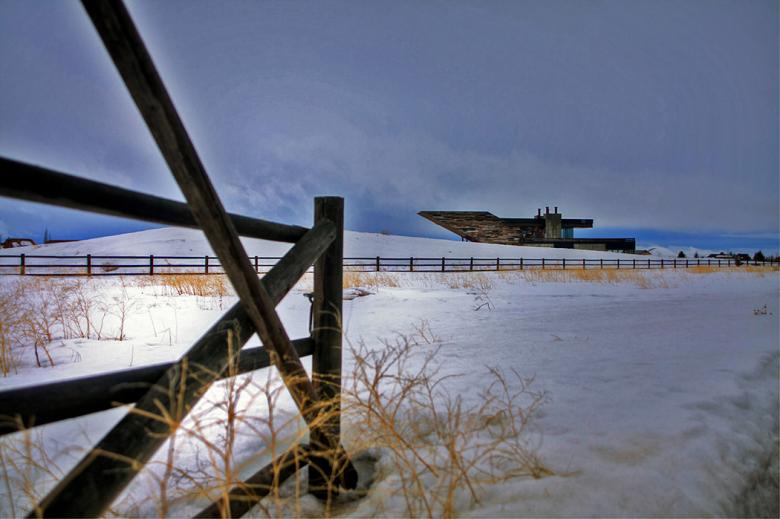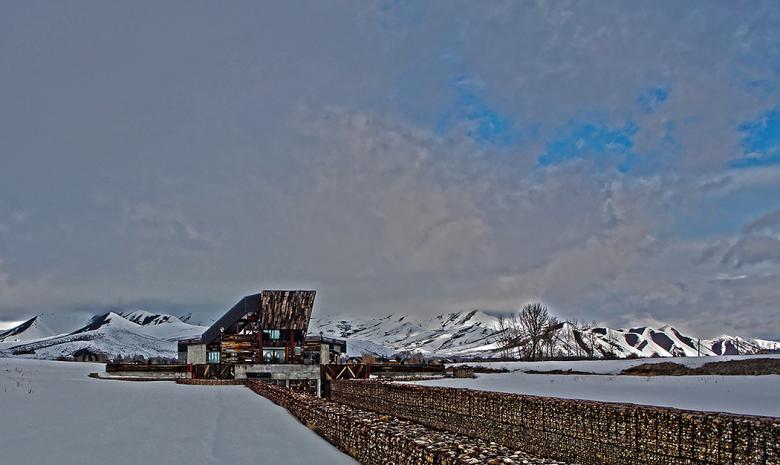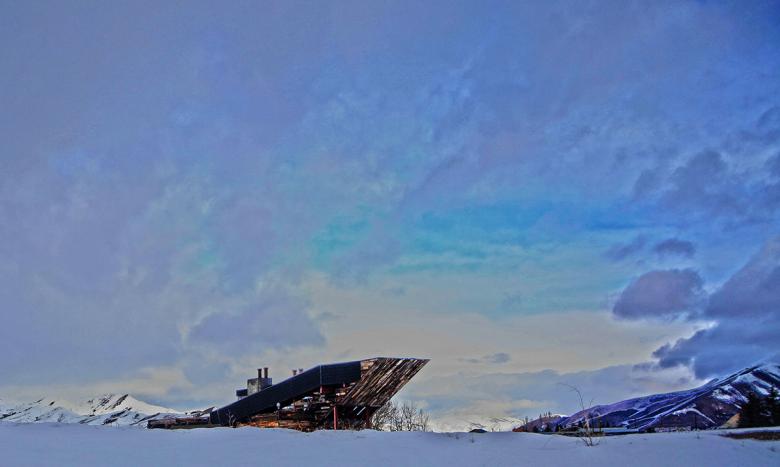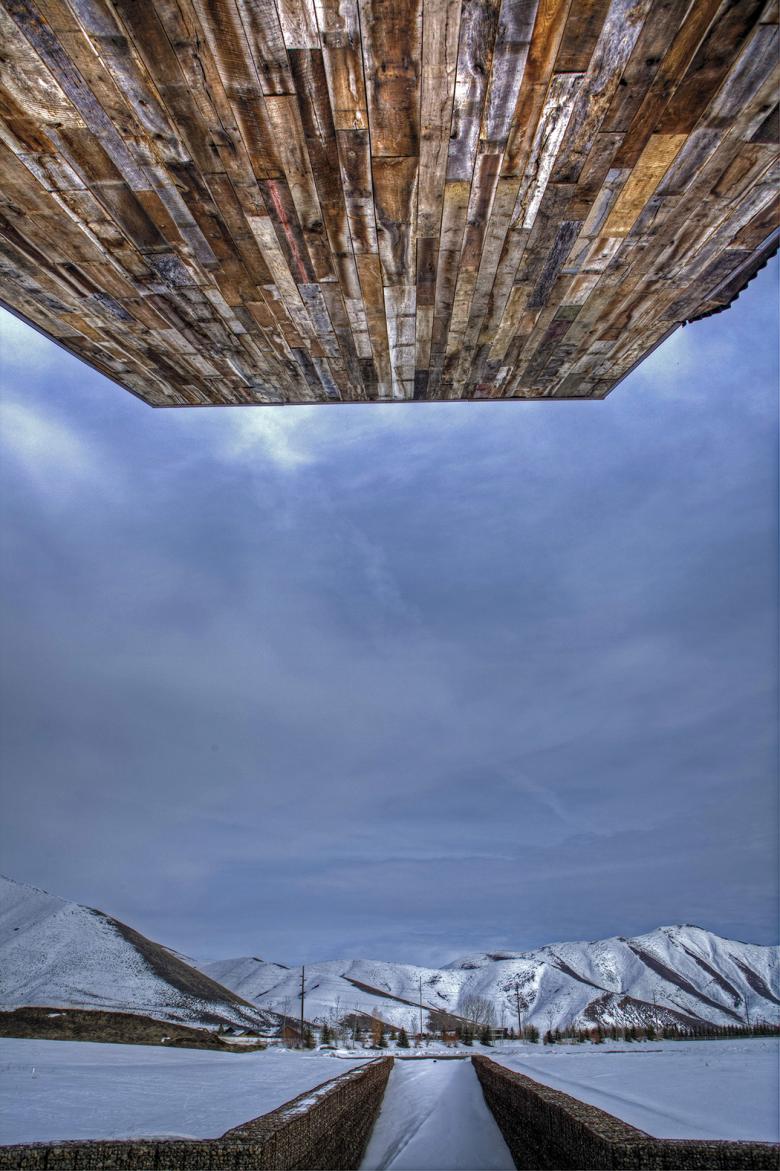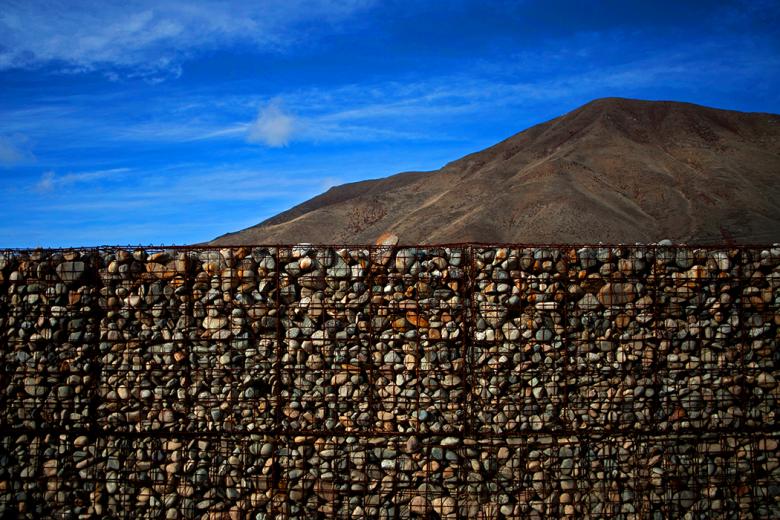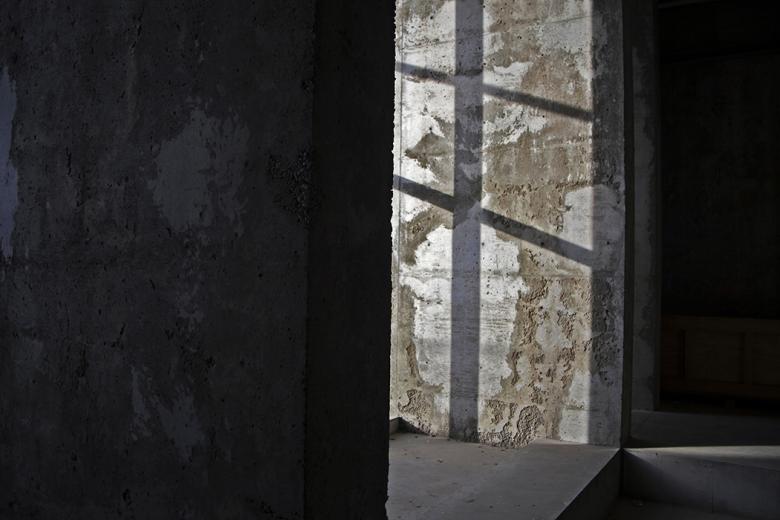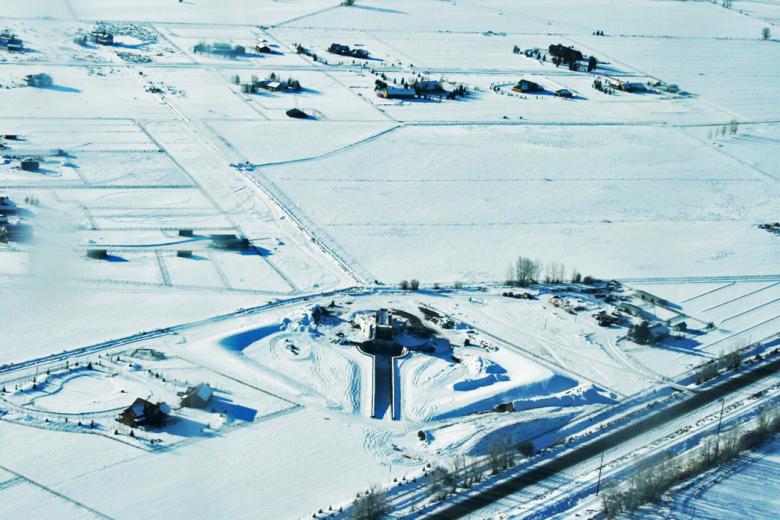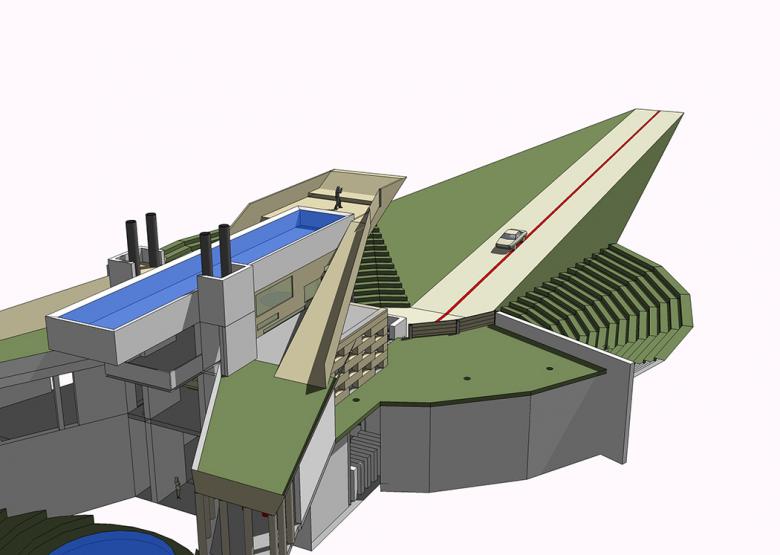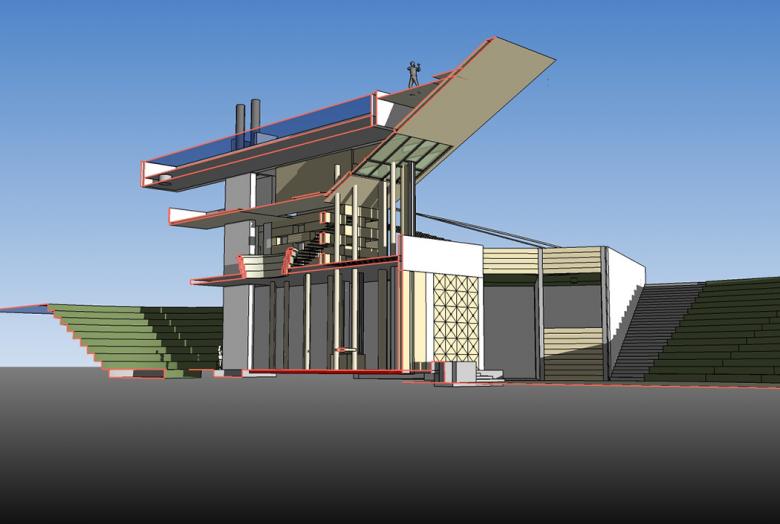30 Cheval
30 Cheval
24. March 2014
Bellevue is a small town with a population just over 2,000 in the Wood River Vally of central Idaho. This location begs for a dramatic architecture that can contend with the surrounding mountains. Idaho architect Susan Desko has crafted such a design in this large, unfinished house whose prow juts over an impressive diagonal cut in the landscape. The architect answered a few questions about the project.
View looking south, context of adjacent agricultural buildings in foreground
What were the circumstances of receiving the commission for this project?
I received a voice message over Labor Day weekend, requesting that I modify some plans that were ordered from the Internet. My name was recommended to “the voice on my machine” by his window blind installer. I did not return the call. After many rounds of phone-tag requesting my services to revise his internet plans, and my reply phone messages where I expressed no interest in revising plans found on the Internet, I agreed to a face to face meeting in my office to say “no” once and for all. Of course, my future client brought along the “Internet plans” which I reviewed, critiqued, and flat out refused to alter. At which point, he rolled them off of the conference room table and onto the floor, then asked to see examples of my work. Within minutes, he stated he did not like any of my work, but thought we could work well together. As it turns out, we did.
View from neighbors access gate
To what extent did the clients and/or future users of the building influence the design and the outcome of the building?
The client wanted a concrete finish that looked ancient, or from another era, possibly like a ruin from an archaeological dig. The concrete walls were engineered to have extra thickness, so that an eroded finish would not compromise the structural integrity. The concrete subcontractor recommended a form-release product that is typically used on exposed aggregate finishes, where the intent is to ensure that the exposed aggregate does not stick to the formwork. Mock-ups were made to test standard concrete with the form-release product applied to new formwork. The mock-up proved that a textured concrete could be achieved by having the concrete “stick” to the formwork when the forms were removed after curing. This technique was incorporated on all exposed faces of concrete. Despite an even application of the form release, the textured effect was random, and unpredictable – just as the client had hoped it would be. Bright sunlight during various times of the day casts long shadows across the textured wall surfaces, creating different effects year round. Instead of framed artwork on the walls, images are projected on the highly texture walls, creating a nearly 3D effect.
Overall building looking west
Were there any significant challenges that arose during the project? If so, how did you respond to them?
During the course of cost estimating, the cost to export 35,000 cubic yards of soils was more expensive than budgeted. Instead, a screening plant was set up on-site and all excavated materials on site were sorted into fines: 1-1/2" and less, 3" and less, and greater than 6". All sorted materials were then incorporated into various components of the building design. The "6" and greater rocks" were incorporated into a gabion wall system to retain earth along the 240'-long by 24'-deep driveway corridor and 120'-diameter sunken motor-court. Upon final analysis, the gabion cages filled with native river rock were more cost effective than exporting the excavated materials, and also provided a unique retaining wall system not previously contemplated in the original design proposal.
View looking north, rooftop access at black ramp
How does the building relate to contemporary architectural trends, be it sustainability, technology, etc.?
While many building trends are emphasizing the thinness and lightness of building components, this building incorporates components that are even thicker and heavier than they appear. For example, at the below-grade areas, 24'-thick concrete walls retain earth and maintain a cool enclosure at the first-level rooms during a blistering hot summer day. At above-grade locations, a pair of concrete walls were constructed with insulated cavities in between, to not only achieve a thermal break with insulation, but also to achieve the indoor/outdoor effect of the concrete enclosure. A cantilevered roof-top pool weighs in at 233 tons (466,565 pounds) – and that’s just the weight of the water, excluding the weight of structural concrete and steel components containing and supporting these roof loads.
View looking east under Prow, driveway below
While there is a rush to prefab, then ship and build anywhere USA, each 200-year-old plank of reclaimed oak was cut to match the adjacent plank, creating a unique quilt-work of "siding" with infinite board sizes and color in favor of milling each board to the same length, width and thickness for ease of construction.
Regarding the plethora of checklists associated with various green and eco-friendly certifications, few provide "credit" for building components that multi-task, such as cantilevering rooftop pools that double as cisterns for the fire-suppression system of the residence.
View of Gabions along Driveway, native river rock
Inboxes fill daily with promises regarding smart building products, none however, on the scale of sunken courtyards that provide sunshine and refuge from heavy winds and snow drifting. Nor smart building products providing the benefits of oversized and occupiable projecting roof prows that are capable of shading an entire motor court.
It is worth noting that despite high wind loads in the local vicinity of the project, the neighborhood design association as well as the local building jurisdiction refused permits for wind turbines. Four structural stacks have been engineered to support the future loads of such, should the jurisdiction and restrictions change at any time in the near or distant future.
Email interview conducted by John Hill.
Textured Concrete Wall at Interior
Aerial looking West
Sketch UP view showing ramp to roof-top pool
Sketch UP Building Section
30 Cheval
Bellevue, Idaho
Client
Withheld
Architect
Susan Desko, AIA
Sun Valley, ID
Design Principal
Susan Desko, AIA
Project Team
Nikul Shah, E G Thiel, J J Rumpeltes
Structural Engineer
Stapley Engineering
MEP/FP Engineer
Hyrdronics Unlimited, Design/Build Mechanical Subcontractor
Contractor/Construction Manager
Owner/Architect Design/Build
Concrete Subcontractor
Dave Soarres
Steel Erector
Tony Engleman
Excavation & Gabion Installation
Rockin’ T Construction
Site Area
8 acres
Building Area
10,000 square feet
Related articles
-
Spotlight on Italy
on 5/16/18
-
Bologna Shoah Memorial
on 7/20/15
